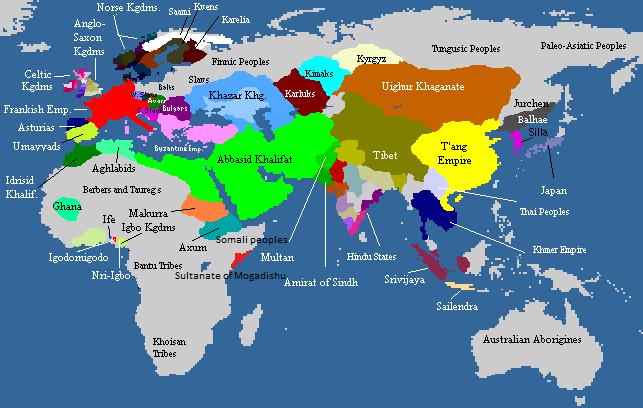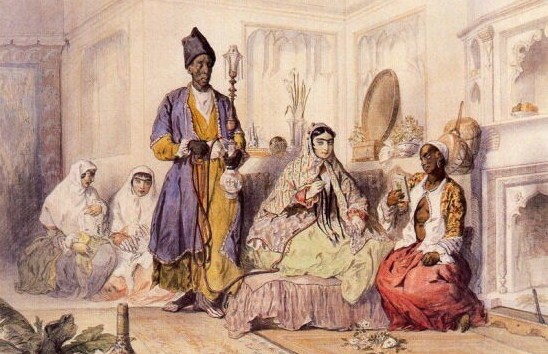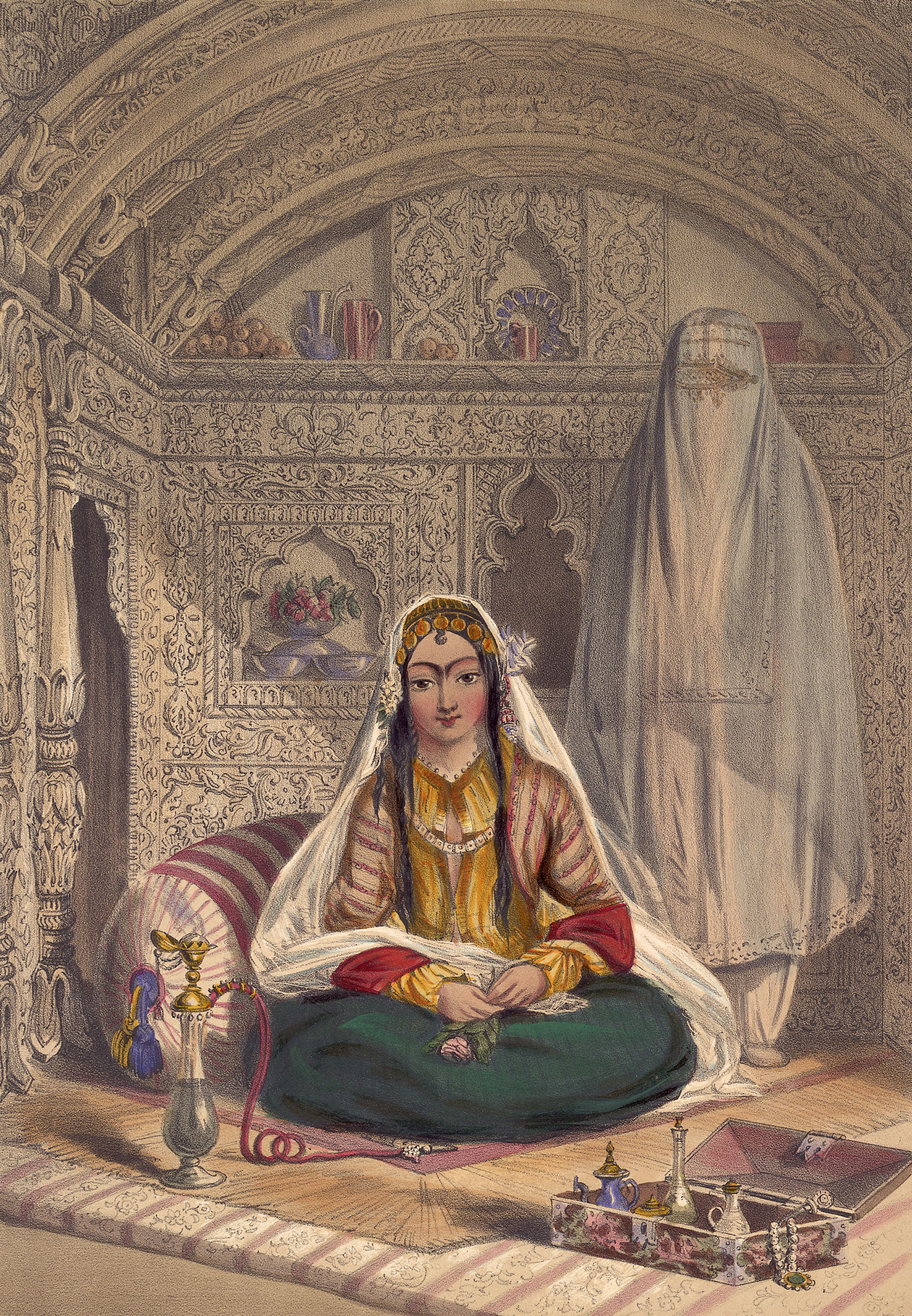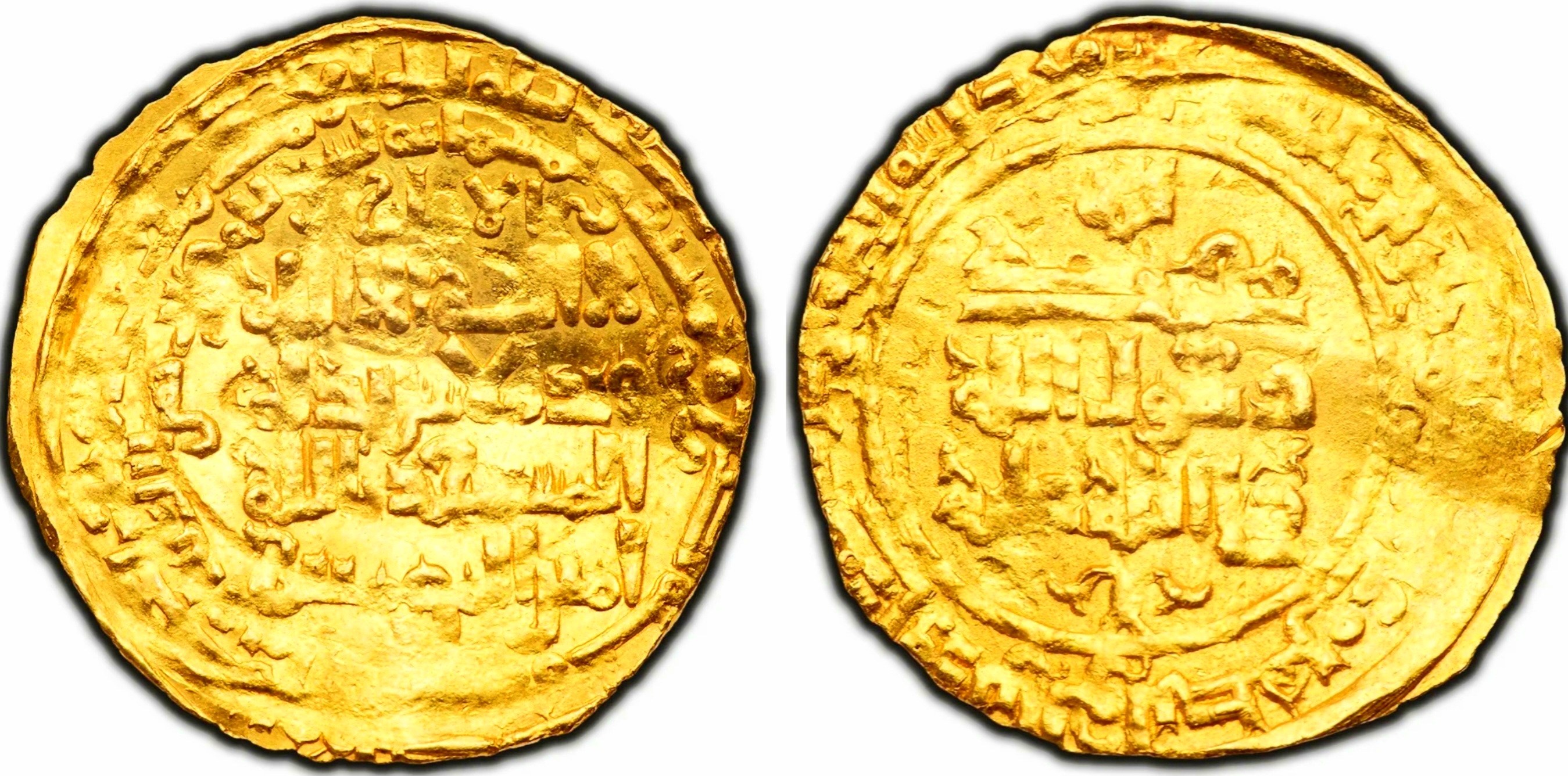|
Jawaris
Jarya or jariya (; ), also jawari (), was a term often used for female slaves in the medieval Islamic world. In a courtly context, they could be " slaves for pleasure" (muṭʿa, ladhdha) or “slaves for sexual intercourse” (jawārī al-waṭ), who had received special training in artistic skills. In contrast to the Qiyan, however, they normally did not perform for men other than the man in whose harem they were placed. History The slave category of the jarya—similar to the qiyan—rose to fame during the Abbasid Caliphate era, possibly because free Arab women became more and more secluded from society during this time period. They were acquired by purchase or captured as war booty. The term were applied to such enslaved women who, by instruction or self-education, acquired a great knowledge of artistic skills and intellectual knowledge by which they could entertain a man, rather than by sexuality and physical beauty. They could study issues from music and poetry to rel ... [...More Info...] [...Related Items...] OR: [Wikipedia] [Google] [Baidu] |
Abbasid Harem
The harem of the caliphs of the Abbasid Caliphate (750–1258) in Baghdad was composed of their mothers, wives, slave concubines, female relatives and slave servants (women and eunuchs), occupying a secluded portion of the Abbasid household. This institution played an important social function within the Abbasid court and was that part were the women were confined and secluded. The senior woman in rank in the harem was the mother of the Abbasid caliph, Caliph. The Abbasid harem acted as a role model for the harems of other Islamic dynasties, as it was during the Abbasid Caliphate that the harem system was fully enforced in the Muslim world. Background and origin The harem system first became fully institutionalized in the Islamic world under the Abbasid caliphate. Although the term ''harem'' does not denote women's quarters in the Quran, a number of Quranic verses discussing modesty and seclusion were held up by Quranic commentators as religious rationale for the s ... [...More Info...] [...Related Items...] OR: [Wikipedia] [Google] [Baidu] |
Sexual Slavery In Islam
Concubinage in the Muslim world was the practice of Muslim men entering into intimate relationships without marriage, with enslaved women, though in rare, exceptional cases, sometimes with free women. It was a common practice in the Ancient Near East for the owners of slaves to have intimate relations with individuals considered their property, and Mediterranean societies, and had persisted among the three major Abrahamic religions, with distinct legal differences, since antiquity. Islamic law has traditionalist and modern interpretations, with the former historically allowing men to have sexual relations with their female slaves, while affording female slaves a variety of different rights and privileges in different periods. An example is the status of ''umm al-walad'', which could be conveyed to a concubine who gave birth to a child whose paternity was acknowledged by her owner. In certain times and places, this status prevented a concubine from being sold, and provided oth ... [...More Info...] [...Related Items...] OR: [Wikipedia] [Google] [Baidu] |
Harem
A harem is a domestic space that is reserved for the women of the house in a Muslim family. A harem may house a man's wife or wives, their pre-pubescent male children, unmarried daughters, female domestic Domestic worker, servants, and other unmarried female relatives. In the past, during the history of slavery in the Muslim world, era of slavery in the Muslim world, harems also housed enslaved Concubinage in Islam, concubines. In former times, some harems were guarded by eunuchs who were allowed inside. The structure of the harem and the extent of monogamy or polygyny have varied depending on the family's personalities, socio-economic status, and local customs. Similar institutions have been common in other Mediterranean Basin, Mediterranean and Middle Eastern civilizations, especially among royal and upper-class families, and the term is sometimes used in other contexts. In traditional Persian residential architecture, the women's quarters were known as (), and in the Indian s ... [...More Info...] [...Related Items...] OR: [Wikipedia] [Google] [Baidu] |
Abbasid Caliphate
The Abbasid Caliphate or Abbasid Empire (; ) was the third caliphate to succeed the Islamic prophet Muhammad. It was founded by a dynasty descended from Muhammad's uncle, Abbas ibn Abd al-Muttalib (566–653 CE), from whom the dynasty takes its name. After overthrowing the Umayyad Caliphate in the Abbasid Revolution of 750 CE (132 AH), they ruled as caliphs based in modern-day Iraq, with Baghdad being their capital for most of their history. The Abbasid Revolution had its origins and first successes in the easterly region of Khurasan, far from the Levantine center of Umayyad influence. The Abbasid Caliphate first centered its government in Kufa, modern-day Iraq, but in 762 the caliph al-Mansur founded the city of Baghdad as the new capital. Baghdad became the center of science, culture, arts, and invention in what became known as the Golden Age of Islam. By housing several key academic institutions, including the House of Wisdom, as well as a multiethnic and multi- ... [...More Info...] [...Related Items...] OR: [Wikipedia] [Google] [Baidu] |
Arabe 3929, 151, Jariya
Arabe ('Arabic' or 'Arab' in French) or Árabe (in Spanish and Portuguese) may refer to: * French ship ''Arabe'', several ships with the name * C.D. Árabe Unido, a Panamanian football club * Cristhian Árabe, Bolivian footballer See also * '' El árabe'', a Mexican telenovela * Arab (other) An Arab is a member of the Arabic language, Arabic speaking nations in the Middle East and North Africa. It can also refer to someone who has citizenship of another country but is of Arab descent. Arab, Arabic, Ərəb or Arap may also refer to: ... * Arrabe (other) {{Disambiguation, surname ... [...More Info...] [...Related Items...] OR: [Wikipedia] [Google] [Baidu] |
Hababah (slave)
Hababah (; d. 724), was a '' jarya'' slave singer and poet, concubine of the Caliph Yazid II. Hababah was a slave, brought to the Umayyad harem of the Caliph Yazid II as a concubine. She was a non-Arab slave, trained in one of the schools for qiyan or singing girl in Medina. Yazid II noticed her during a visit to Hijaz, and his wife Sada bought Hababah as a gift for him for a price of 4,000 dinars. She entertained him as a singer and a poet. Yazid became so much in love with her that he was described as hypnotized by her singing and poetry.Mernissi, Fatima; Mary Jo Lakeland (2003). The forgotten queens of Islam. Oxford University Press. . The chronicles state: :'One day while Hababa was singing, Yazid experienced such great pleasure that he burst out: "I want to fly away!" :Hababa told him: "Commander of the Faithful, if you leave the umma and also us, who will take care of us?'" Hababah came to have more influence than any other concubine over a Caliph before her. Yazid ... [...More Info...] [...Related Items...] OR: [Wikipedia] [Google] [Baidu] |
Sexual Slavery
Sexual slavery and sexual exploitation is an attachment of any ownership rights, right over one or more people with the intent of Coercion, coercing or otherwise forcing them to engage in Human sexual activity, sexual activities. This includes forced labor that results in sexual activity, forced marriage and sex trafficking, such as the Child prostitution, sexual trafficking of children. Sexual slavery has taken various forms throughout history, including single-owner bondage and ritual servitude linked to religious practices in regions such as Ghana, Togo, and Benin. Moreover, slavery's reach extends beyond explicit sexual exploitation. Instances of non-consensual sexual activity are interwoven with systems designed for primarily non-sexual purposes, as witnessed in the colonization of the Americas. This epoch, characterized by encounters between European explorers and Indigenous peoples, saw forced labor for economic gains and was also marred by the widespread prevalence of ... [...More Info...] [...Related Items...] OR: [Wikipedia] [Google] [Baidu] |
Slavery In The Umayyad Caliphate
Slavery in the Umayyad Caliphate refers to the chattel slavery taking place in the Umayyad Caliphate (661–750), which comprised the majority of the Middle East with a center in the capital of Damascus in Syria. The slave trade in the Umayyad Caliphate was massive and expanded in parallel with the Umayyad Imperial conquests, when non-Muslim war captives as well as civilians were enslaved, and humans were demanded by tribute and taxation from subjugated people. The slave trade was a continuation of the preceding slave trade and slavery in the Rashidun Caliphate except in size, which was paralleled by the massive Imperial conquests. When the governing elite of the Caliphate established a permanent urbanized residence, the institution of slavery expanded in parallel with the growing access as well as the needs of a new urbanised and more sophisticated state apparatus. The system of harem sexual slavery, as well as military slavery of male slaves, expanded during this period, th ... [...More Info...] [...Related Items...] OR: [Wikipedia] [Google] [Baidu] |
Slavery In The Abbasid Caliphate
Chattel slavery was a major part of society, culture and economy in the Abbasid Caliphate (750–1258) of the Islamic Golden Age, which during its history included most of the Middle East. While slavery was an important part also of the preceding practice of slavery in the Umayyad Caliphate (661–750), it was during the Abbasid Caliphate that the slave trade to the Muslim world reached a more permanent commercial industrial scale, establishing commercial slave trade routes that were to remain for centuries. The Caliphate was a major slave trade destination, and slaves were imported from several destinations. Since Islamic law prohibited enslavement of Muslims, non-Muslim slaves (kafir) were imported from non-Muslim lands ( Dar al-harb) around the Muslim world ( Dar al-Islam). These included pagan Africa in the south; Christian and pagan Europe in the north; and pagan Central Asia and India in the east. These slaves came from the north along the Balkan slave trade and th ... [...More Info...] [...Related Items...] OR: [Wikipedia] [Google] [Baidu] |
Slaves Of The Medieval Islamic World
Slavery is the ownership of a person as property, especially in regards to their labour. Slavery typically involves compulsory work, with the slave's location of work and residence dictated by the party that holds them in bondage. Enslavement is the placement of a person into slavery, and the person is called a slave or an enslaved person (see ). Many historical cases of enslavement occurred as a result of breaking the law, becoming indebted, suffering a military defeat, or exploitation for cheaper labor; other forms of slavery were instituted along demographic lines such as race or sex. Slaves would be kept in bondage for life, or for a fixed period of time after which they would be granted freedom. Although slavery is usually involuntary and involves coercion, there are also cases where people voluntarily enter into slavery to pay a debt or earn money due to poverty. In the course of human history, slavery was a typical feature of civilization, and existed in most societ ... [...More Info...] [...Related Items...] OR: [Wikipedia] [Google] [Baidu] |
History Of Slavery
The history of slavery spans many cultures, nationalities, and Slavery and religion, religions from ancient times to the present day. Likewise, its victims have come from many different ethnicities and religious groups. The social, economic, and legal positions of slaves have differed vastly in different systems of slavery in different times and places. Slavery has been found in some hunter-gatherer populations, particularly as hereditary slavery, but the conditions of agriculture with increasing social and economic complexity offer greater opportunity for mass chattel slavery. Slavery was institutionalized by the time the first civilizations emerged (such as Sumer in Mesopotamia, which dates back as far as 3500 BC). Slavery features in the Mesopotamian ''Code of Hammurabi'' (c. 1750 BC), which refers to it as an established institution. Slavery was widespread in the ancient world in Europe, Asia, the Middle East, and Africa. and the Americas. Slavery became less common thro ... [...More Info...] [...Related Items...] OR: [Wikipedia] [Google] [Baidu] |
Arabic-language Poets
Arabic (, , or , ) is a Central Semitic language of the Afroasiatic language family spoken primarily in the Arab world. The International Organization for Standardization (ISO) assigns language codes to 32 varieties of Arabic, including its standard form of Literary Arabic, known as Modern Standard Arabic, which is derived from Classical Arabic. This distinction exists primarily among Western linguists; Arabic speakers themselves generally do not distinguish between Modern Standard Arabic and Classical Arabic, but rather refer to both as ( "the eloquent Arabic") or simply ' (). Arabic is the third most widespread official language after English and French, one of six official languages of the United Nations, and the liturgical language of Islam. Arabic is widely taught in schools and universities around the world and is used to varying degrees in workplaces, governments and the media. During the Middle Ages, Arabic was a major vehicle of culture and learning, especially ... [...More Info...] [...Related Items...] OR: [Wikipedia] [Google] [Baidu] |









